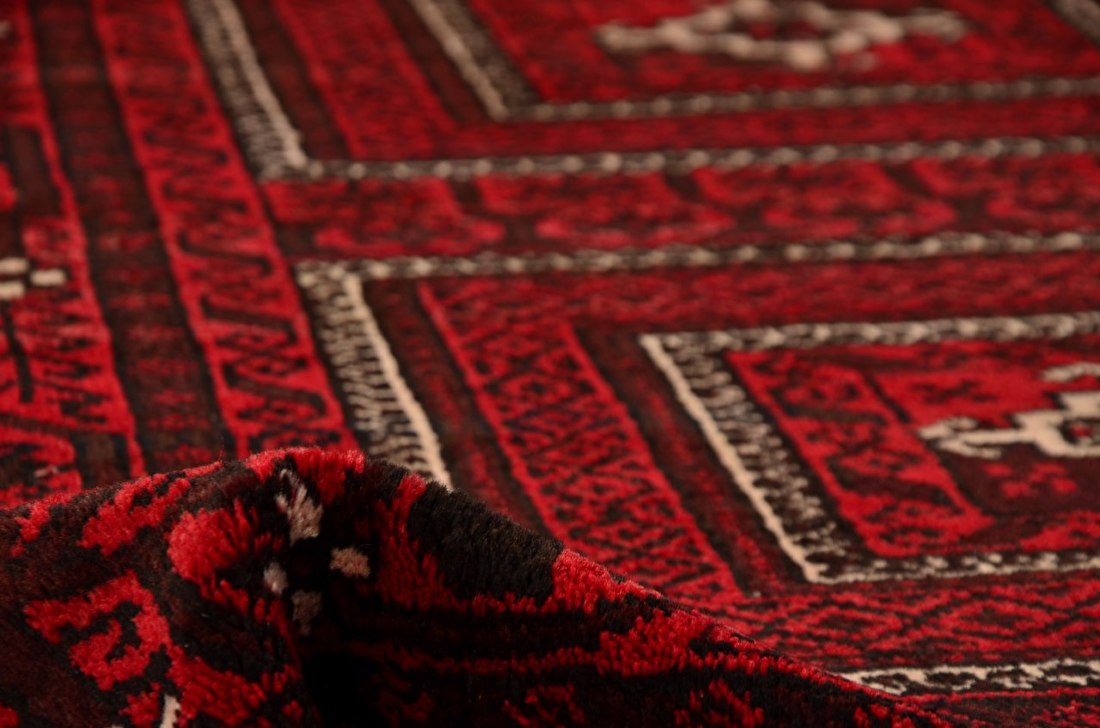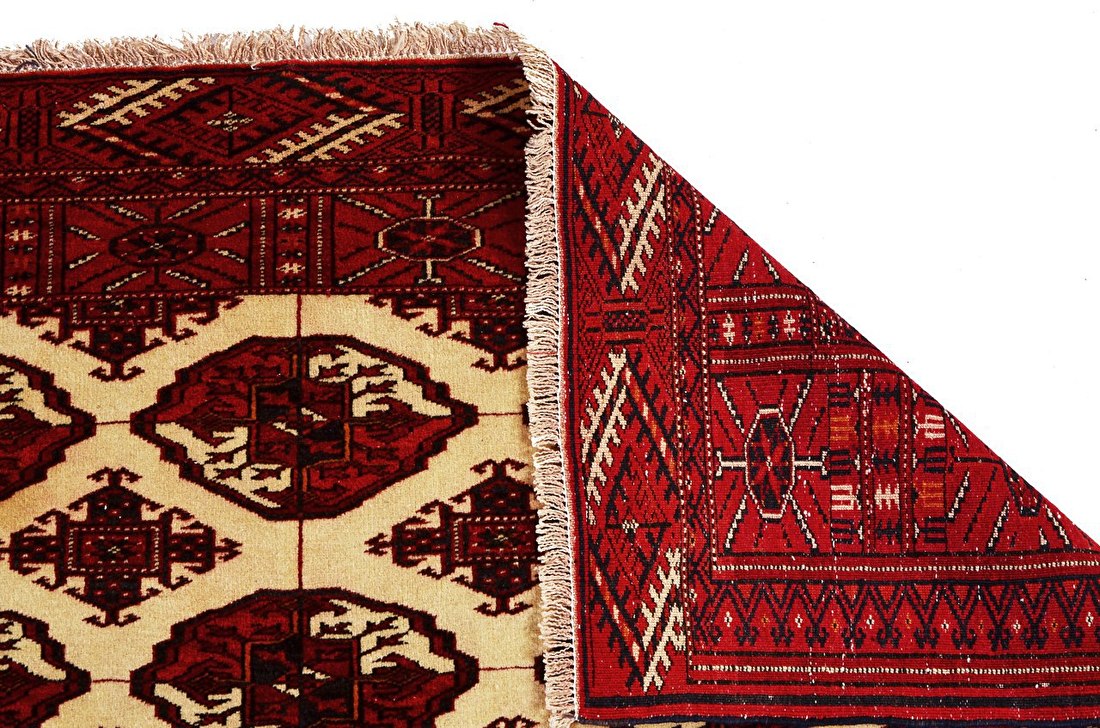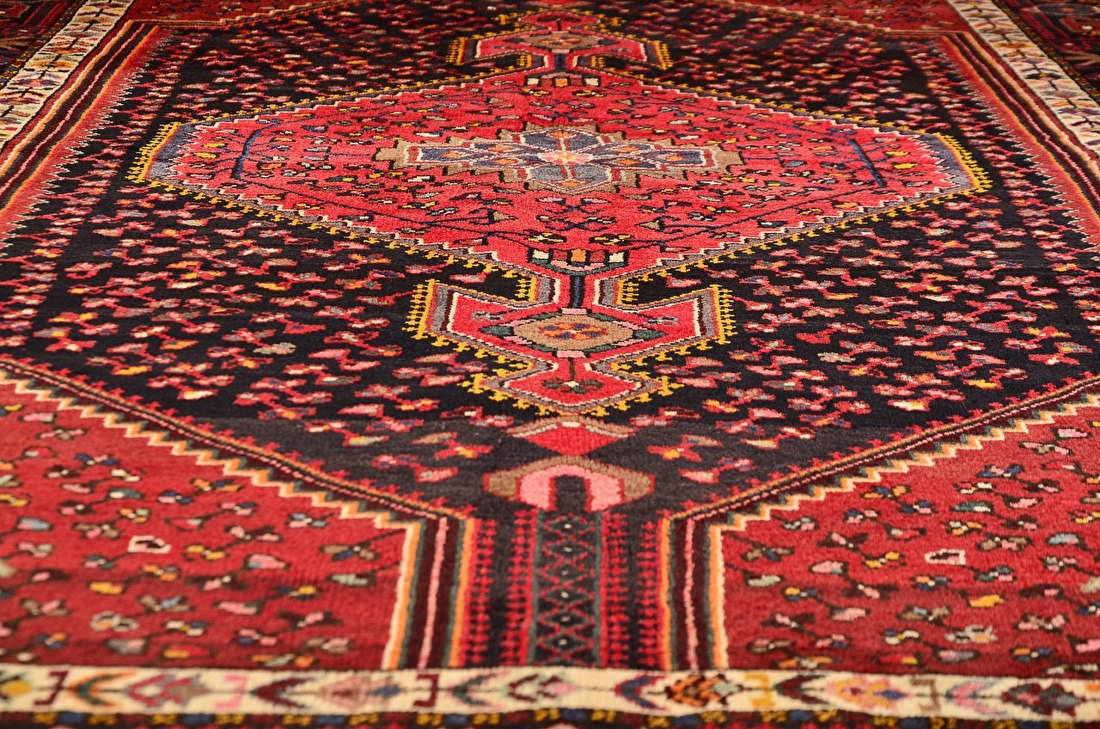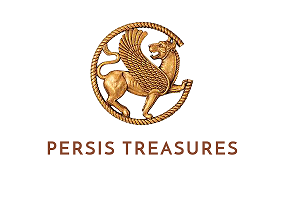About our Persian rugs
Persian rugs are made in all forms and sizes. A rug of 2x2 meters can cost €300,- as well as €3000,-. The price is mainly determined by the duration of the manufacturing process. Weaving Persian rugs by hand is a very time consuming process. The exact time it takes is dependent on the size and quality of the carpet. Larger carpets are often made by multiple artists working together. The quality of the rug is mainly dependent of the rugs knot density. A larger amount of knots per M2 makes the carpet dense and the patterns and colours more intricate and lively. The weaving process can take many months. Some larger denser carpets can take years to make with multiple artists working many hours a day on their project.
The process begins by making the skeleton of the carpet. The skeleton is made up from warps and wefts. Warps are vertical thick lines of wool, cotton or silk that run through the length of the rug. Wefts are horizontal lines which pass over and under the warps. The pattern is applied by knotting dyed wool, cotton or silk threads to warps. After each line of knots one or more wefts are added to secure the knots into their place. A Persian rug can contain many millions of knots.
Each style of rugs has its own traditional background. Nomadic styles are often smaller than their other Persian counterparts. Nomadic weavers travel around with their herds. This did not allow them to make big rugs in set workplaces. Their workshop had to move around with them. Persian rugs can be made by men and women alike. This too depends on the origin of the rug. In traditional nomadic tribes the men usually go into the mountains as shepherds while the woman work on their art at home. In other communities both the men and the women work on their carpets. The art of carpet weaving is often passed down within families to the children so the traditional styles of the ancestors stays alive in the carpets made by later generations.
We have different styles of carpets in our webshop. The four most common ones are discussed below. These are Baluchi rugs, Kurdisch rugs, Turkmen rugs and Hamedan rugs.
Baluchi rugs
Baluchi rugs are made by Baluch nomads living in southeast Iran. These traditional nomadic people nowadays mainly live in southeast Iran, south-Afghanistan and west-Pakistan. The carpets in our shop originate in the Iranian city of Mashad. Mashad is an ancient city which is also Iran’s largest city after the capital Teheran. Baluchi rugs are characterised by their red, brown and darker shades of blue colour patterns. The rugs are mainly made up of wool but in some cases cotton, goat- or camelhairs and/or silk are also used. Baluchi rugs are oftentimes smaller than their other Persian counterparts. The nomadic lifestyle of Baluchi people did not allow them to weave bigger carpets. Baluchi rug patterns are often made up of geometrical patterns like hexagons, squares and triangles. Making an Baluchi rug with 4 or 5 artists working 6 hours a day can take up until ten months depending on the size of the rug.

Kurdisch rugs
The Kurds are a group of people living in different countries in the Middle-East. Persian Kurds mainly live in northwest-Iran. Kurds are known worldwide for their struggle for independence. Some groups of Kurds feel oppressed and dream of a Kurdish state. The relations between Persian Kurds and other Iranian people are rather stable and friendly. Something that Kurdish people are not usually known for are the beautiful Persian carpets their artists make. Kurdish carpets are often more colourful than other Persian styles of carpets. Kurdish rugs are traditionally made in rather basic conditions. De artists work in tents made out of goat hair which are mobile to move along with the herds of animals and their shepherds. In winter the mountain tribes descend into the warmer valley and in summer they ascend to high mountain pastures to find fresh grass for the animals. It is said that Kurdish artists incorporate their experiences, hopes and dreams in the patterns of their rugs. Kurdish rugs are symbols for the diversity, resilience and hopes of independence of the Kurdish people.

Turkmen rugs
These Persian rugs are made by Turkmen tribes living in northeast Iran. The Turkmen rugs are often on the smaller side because the traditional nomadic lifestyle of the Turkmen tribes did not allow them to make bigger carpets. The weavers travel along with the herds that supply the wool for their carpets. Larger Turkmen carpets are made in villages instead of in nomadic groups. Turkmen demography consists of different subgroups each making their own kinds of Persian carpets. The different styles share the use of red and brown shades as dominant colors in their patterns. Turkmen rug patterns often contain purple, yellow and green details. Turkmen artists are well known for their extensive technical abilities. They are able to make dense carpets with a high number of knots per M2. The high density intensifies the patterns and colors used.

Hamedan rugs
Hamedan is a major city in west-Iran. The city is famous for the handicraft work that is done by artists in the region. Many of our Minakari and ceramic items originate in this region as well. Hamedan is actually on of the oldest cities in the world and is referred to in the bible as Ekbatana. The city is a trading hub for all the artworks flowing into the city from the region. Many of these styles are sold under their own names but they are all part of the Hamedan style. Examples of some premium styles from this region are Zanjan & Toyserkan carpets. The colours of Hamedan rugs are mainly blue & red. The rugs are characterised by diamond shaped motifs. The patterns are often alike Baluchi styles sharing the geometrical basis for their patterns. Lively, flowery patterns alike Kurdish carpets are sometimes seen in Hamedan carpets as well.







